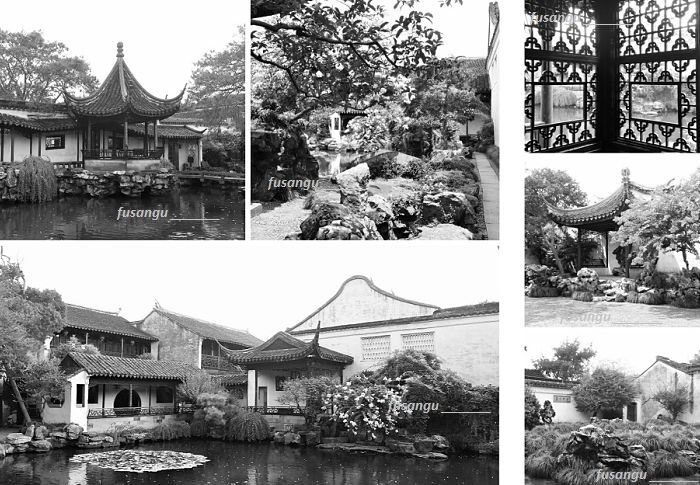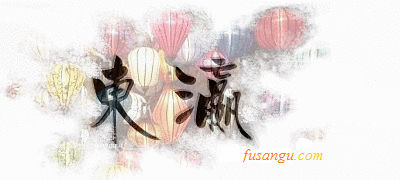
Many people visit Suzhou with a one-day excursion from Shanghai or Hangzhou. A much better choice is to spend at least one night in the city.
Suzhou is rich in cultural heritage and its sites, especially the Classic Gardens, require plenty of time and sufficient freedom in arranging and adapting the schedule.
In this page we present what we deem to be the best Suzhou two-day visit programme.
Practical information is also given so as to help make arrangements easy and avoid any waste of time.
Suzhou: 2-day programme
In general two days are insufficient for a visit to Suzhou. Devoting to the city two days is nevertheless a reasonable choice for the first journey to China (especially if the duration is inferior to 3 weeks).
The itinerary described hereafter is focused on the main cultural sites, especially the Classical Gardens.
Classical Gardens of Suzhou
Suzhou is home to some of the most beautiful and significant traditional gardens of China. Nine of them, each of which would be sufficient of a reason to plan a visit to the city, are named the Classical Garden of Suzhou.
Along with the great museums in Beijing, Shanghai and Xi’An, these magnificent works of art offer a vivid representation of the beauty and greatness of Ancient China.
While their exceptional beauty is self-evident and even a simple stroll in the garden makes for a wonderful experience and a radically different perception of the reality of time and space, a great deal of knowledge is required to appreciated the meanings and the significance of these artefacts.
Day 1: Classical Gardens, Museum of Suzhou, PingJiangLu
Assuming that you choose to wake up early and begin your visit by 8:00 a.m. we suggest you include in your itinerary the Museum of Suzhou, the Humble Administrator’s Garden, the Lion Grove Garden, the Master of the Nets’ Garden, the Lingering Garden, the Tiger Hill.
Master of the Nets Garden
The Master of the Nets Garden (网师园, WangShiYuan) is the smallest among the Classical Gardens of Suzhou. It dates back to the Southern Song Dynasty Period. It is an excellent place where you can start to learn how to appreciate this form of art.
The composition is built around a central pond, surrounded by pavilions and corridors. The observer follows a circular path that opens to a rapidly changing horizons.
It is incredible what the meticulous design achieved in such a small area. Next to the central section around the pond, are the residential quarters. Here you can see many halls exquisitely ornate. Not to be missed is also the small courtyard DianChunYi (殿春簃), a real gem. There is a deep sense of harmony between architecture and Nature;
Museum of Suzhou
The Suzhou Museum boasts a large collection of ancient art which comprises works of painting, calligraphy, porcelain.
Of particular interest (especially in the context of this itinerary) are the relics of the Wu Pagodas (Ruiguang Pagoda and Yunyan Pagoda).
The museum is set in modern buildings which echo the shapes and colors of the traditional architecture of the ancient city.
Humble Administrator’s Garden
The Humble Administrator’s Garden (拙政园, ZhuoZhengYuan) is the largest and most renowned garden in Suzhou.
Dating back to the Ming Dynasty Period, it was founded by a civil servant who chose to retire from his duties to embrace seclusion and a simple and modest life.
The garden area, centred around a large lake, is divided in three parts (eastern, central and western) and comprises a large number of scenes as well as a museum which occupies the former residence. The number of elements (buildings, bridges, stelae, penjing) in the composition is impressive.
Eastern precinct
The eastern section is quite unique as it is formed by a large space of a scale not usually seen is in this kind of gardens. Lawns, small hills, pine groves and a large pond make for a peaceful environment echoing the serenity of the countryside.
Much of this can be contemplated from the Snow and Orchid Hall (兰雪堂, LanXueTang), where you also find a map of the whole garden. Not to be missed are also the Heavenly Spring Pavilion (天泉亭, TianQuanTing) and the terrace next to the large lake full of lotuses, the Lotus Pavilion (芙蓉榭, FuRongXie).
Central precinct
The central section is very dense. Numerous scenes are set around the the pond in the centre. Three islands are said to be an allusion to Mount PengLai’s heavenly land.
The main architecture of this section is the Hall of Distant Fragrance (远香堂, YuanXiangTang), an elegant villa named after the nearby lotus pool. This can be seen through the large and exquisitely decorated windows of the building. A terrace allows you wide views over the pond and the islands, adorned by graceful pavilions. South of the villa is a small pond with rockery and a bamboo grove.
You can enjoy lingering on the Small Flying Rainbow Bridge (小飞虹桥, XiaoFeiHongQiao), designed by a famous artist of Ming China, and continuously change your perspective.
Western precint
The western part is characterised by a large number of buildings. Though the landscape is very dense, it remarkably keeps a balance and creates a very intimate atmosphere.
The main building is divided into two halls, the Eighteen Camellias Hall (十八曼陀罗花馆, ShiBaManTuoLuoGuan) and the Thirty-six Pairs of Mandarin Ducks Hall (三十六鸳鸯馆, SanShiLiuYuanYangGuan).
At the western end of the area is a large open space where you can admire an outstanding collection of bonsai and penjing (“landscape in a vase”), compositions of plants and rocks arranged in artistic vases.
Lion Grove Garden
The Lion Grove Garden (狮子林园, ShiZiLinYuan) dates back to the Yuan Dynasty Period. It was built by the disciples of a Buddhist monk. It quickly became a gathering place for literati and followers of Buddhism as well as a source of inspiration for artists The garden comprises a number of artistic buildings, among which the True Delight Pavilion (真去亭, ZhenQuTing) stands out. At the centre, surrounded by the pond, is a large rockery mostly made of Taihu rocks. Their shapes give rise to the most various impressions. Together with the trees, they are meant to recreate a mountainous landscape, a dimension most beloved by Zen practitioners.
PingJiang Road
You can conclude the first day in Suzhou with a relaxing stroll along PingJiangLu, a long street surrounded by old buildings. If you do not like crowds, at any time you can take a turn and continue along one of the many small alleys running along canals.

Day 2: Lingering Garden, Tiger Hill
The second day is devoted to sightseeing spots located outside of the core of the city. These can be reached by bus (the tourist line).
-
Lingering Garden (留园, LiuYuan), one of the most renowned gardens of Suzhou, it is also associated to GuQin music. With a history of complicated vicissitudes that led to numerous reconstructions, the garden is most famous for the large rockery formations, the long and meandering covered paths and some of China’s most impressive Scholar stones. Change in perspective is often abrupt and surprising and the visitor feels like he is wandering in a maze. Corridors are a key element of space definition and buildings come in a variety of size, colour and shape. Of particular beauty are the elegant pavilions;
-
Tiger Hill (虎丘, HuQiu), a scenic and historical site, for centuries if not millennia, a coveted destination poets and artists. On the slopes of the beautiful hill amid a lush vegetation are ancient temples, pavilions and gardens. Some of the vestiges date back to the period when Suzhou was founded. The hill emerges from the rather flat surroundings as a singularity and, as it often happens with mountains, it was regarded as a sacred place. Therefore it was here that the King of Wu was buried. Over the centuries its beauty was celebrated by men of culture who gave poetic names to many scenic spots. Poetry and calligraphy works are carved into rocks and cliffs. At the top of the hill stands the imposing seven-storey YunYan Pagoda (云岩寺塔, YunYanSiTa). Despite a consolidation intervention during the Ming Period its brick structure still exhibits a considerable tilt. The tomb of King HeLu lies beneath the Sword Pool (剑池, JianChi). There is also a museum with a collection of penjing.
Variants
You may choose to include a visit to PanMen Scenic Area.
Suggested itineraries:
China suggested 2-week itinerary
Nearby destinations:
Hangzhou 1-day itinerary | Wuzhen 1-day itinerary

